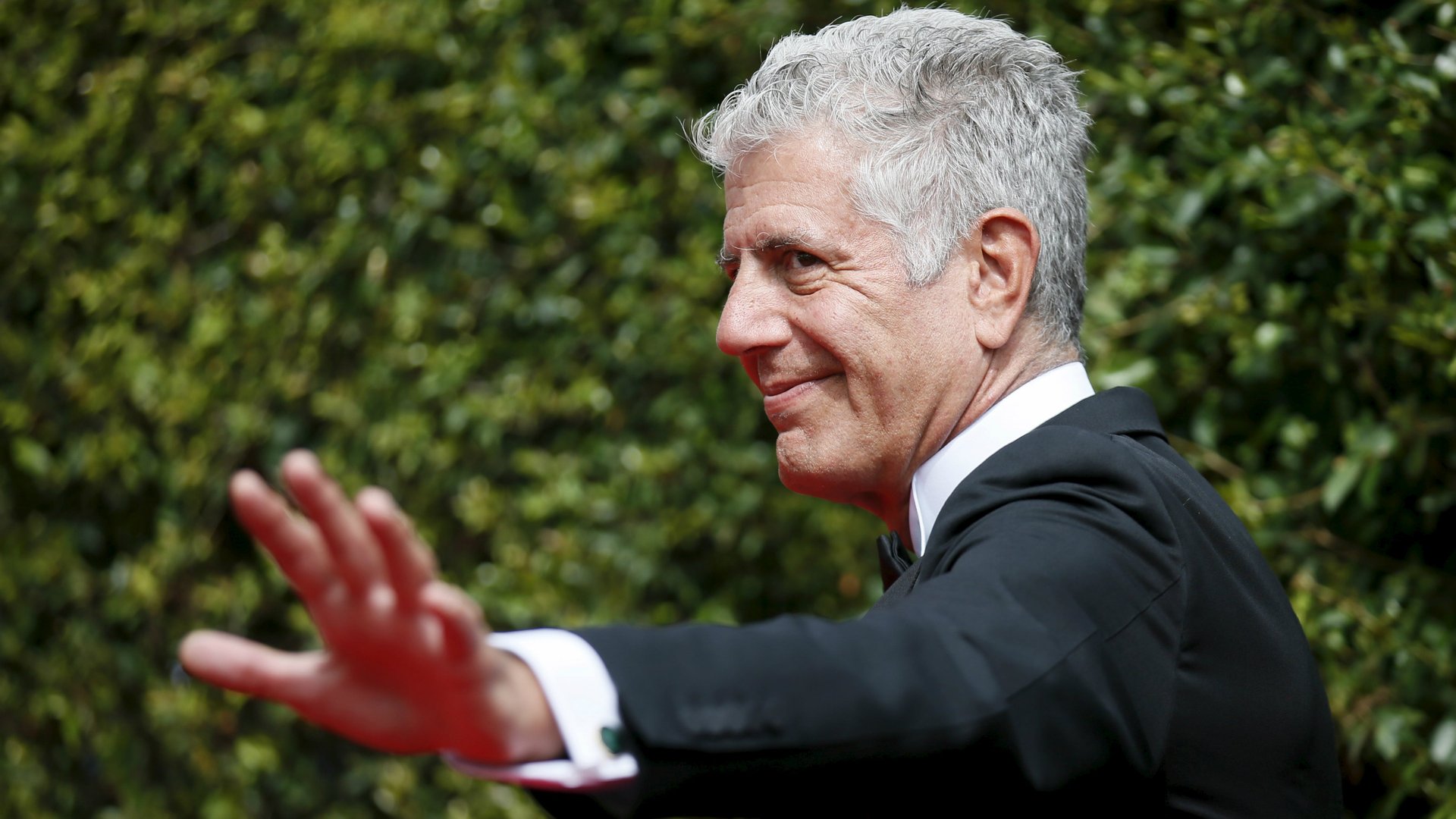Anthony Bourdain says these are the airports with the best food
Try as high-end chefs might to perfect meals served at 35,000 feet, Anthony Bourdain isn’t biting. “No one has ever felt better after eating plane food,” he told Bon Appétit in 2014.


Try as high-end chefs might to perfect meals served at 35,000 feet, Anthony Bourdain isn’t biting. “No one has ever felt better after eating plane food,” he told Bon Appétit in 2014.
But airports are another story. “I’m tragically familiar with the offerings at just about every airport in the world,” Bourdain told the New York Times (paywall). Bourdain, a former chef who makes a living tasting the world’s cuisines for CNN viewers as host of Parts Unknown, has a soft spot for no-frills dining in airports in Singapore and Tokyo.
“Probably Changi Airport in Singapore has the best food; it has a hawker center for the employees that’s open to the public,” he told the Times.
Stalls in these staff cafeterias serve up barbecue pork over rice, Indonesian dish nasi padang, made with anchovies, tofu and vegetables surrounding a mound of steamed rice; and Taiwanese mackerel served with broth and a heart-shaped egg, and countless other delectable plates that will ensure a good night’s sleep on a long-haul flight. They can be hard to find. One of them sits above a parking lot. (No word on whether Bourdain enjoys Changi’s movie theater and butterfly garden while he’s in the world’s favorite airport.)
His other favorite is Narita airport and here too, he goes for the unfussy. Lawson convenience store offers ”ethereal egg salad sandwiches that defy logic and science with their deliciousness and apparent freshness,” Bourdain told the Times. “They sit there at near room temperature for I don’t know how long on white bread wrapped in plastic, and I don’t know why but they’re ridiculously good.”
There’s also a sushi restaurant near where US-bound planes depart that’s “extraordinarily good for an airport sushi place.”
You don’t have to be a celebrity foodie like Bourdain to appreciate these dining options. They serve as a welcome reprieve for any traveler who dreads the over-seasoned airplane food, or for anyone accustomed to the fast-food dominated airport terminals of the US, chains with which Bourdain is no doubt familiar.
Correction: An earlier version of this article called the dish nasi padang Malaysian instead of Indonesian.